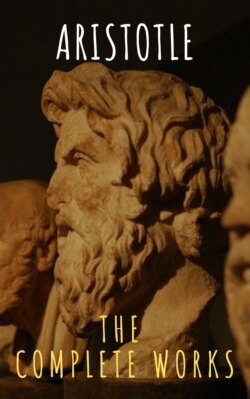Читать книгу Aristotle: The Complete Works - Aristotle - Страница 130
На сайте Литреса книга снята с продажи.
25
ОглавлениеThe preceding arguments constitute our defence of the superiority of commensurately universal to particular demonstration. That affirmative demonstration excels negative may be shown as follows.
(1) We may assume the superiority ceteris paribus of the demonstration which derives from fewer postulates or hypotheses-in short from fewer premisses; for, given that all these are equally well known, where they are fewer knowledge will be more speedily acquired, and that is a desideratum. The argument implied in our contention that demonstration from fewer assumptions is superior may be set out in universal form as follows. Assuming that in both cases alike the middle terms are known, and that middles which are prior are better known than such as are posterior, we may suppose two demonstrations of the inherence of A in E, the one proving it through the middles B, C and D, the other through F and G. Then A-D is known to the same degree as A-E (in the second proof), but A-D is better known than and prior to A-E (in the first proof); since A-E is proved through A-D, and the ground is more certain than the conclusion.
Hence demonstration by fewer premisses is ceteris paribus superior. Now both affirmative and negative demonstration operate through three terms and two premisses, but whereas the former assumes only that something is, the latter assumes both that something is and that something else is not, and thus operating through more kinds of premiss is inferior.
(2) It has been proved that no conclusion follows if both premisses are negative, but that one must be negative, the other affirmative. So we are compelled to lay down the following additional rule: as the demonstration expands, the affirmative premisses must increase in number, but there cannot be more than one negative premiss in each complete proof. Thus, suppose no B is A, and all C is B. Then if both the premisses are to be again expanded, a middle must be interposed. Let us interpose D between A and B, and E between B and C. Then clearly E is affirmatively related to B and C, while D is affirmatively related to B but negatively to A; for all B is D, but there must be no D which is A. Thus there proves to be a single negative premiss, A-D. In the further prosyllogisms too it is the same, because in the terms of an affirmative syllogism the middle is always related affirmatively to both extremes; in a negative syllogism it must be negatively related only to one of them, and so this negation comes to be a single negative premiss, the other premisses being affirmative. If, then, that through which a truth is proved is a better known and more certain truth, and if the negative proposition is proved through the affirmative and not vice versa, affirmative demonstration, being prior and better known and more certain, will be superior.
(3) The basic truth of demonstrative syllogism is the universal immediate premiss, and the universal premiss asserts in affirmative demonstration and in negative denies: and the affirmative proposition is prior to and better known than the negative (since affirmation explains denial and is prior to denial, just as being is prior to not-being). It follows that the basic premiss of affirmative demonstration is superior to that of negative demonstration, and the demonstration which uses superior basic premisses is superior.
(4) Affirmative demonstration is more of the nature of a basic form of proof, because it is a sine qua non of negative demonstration.
